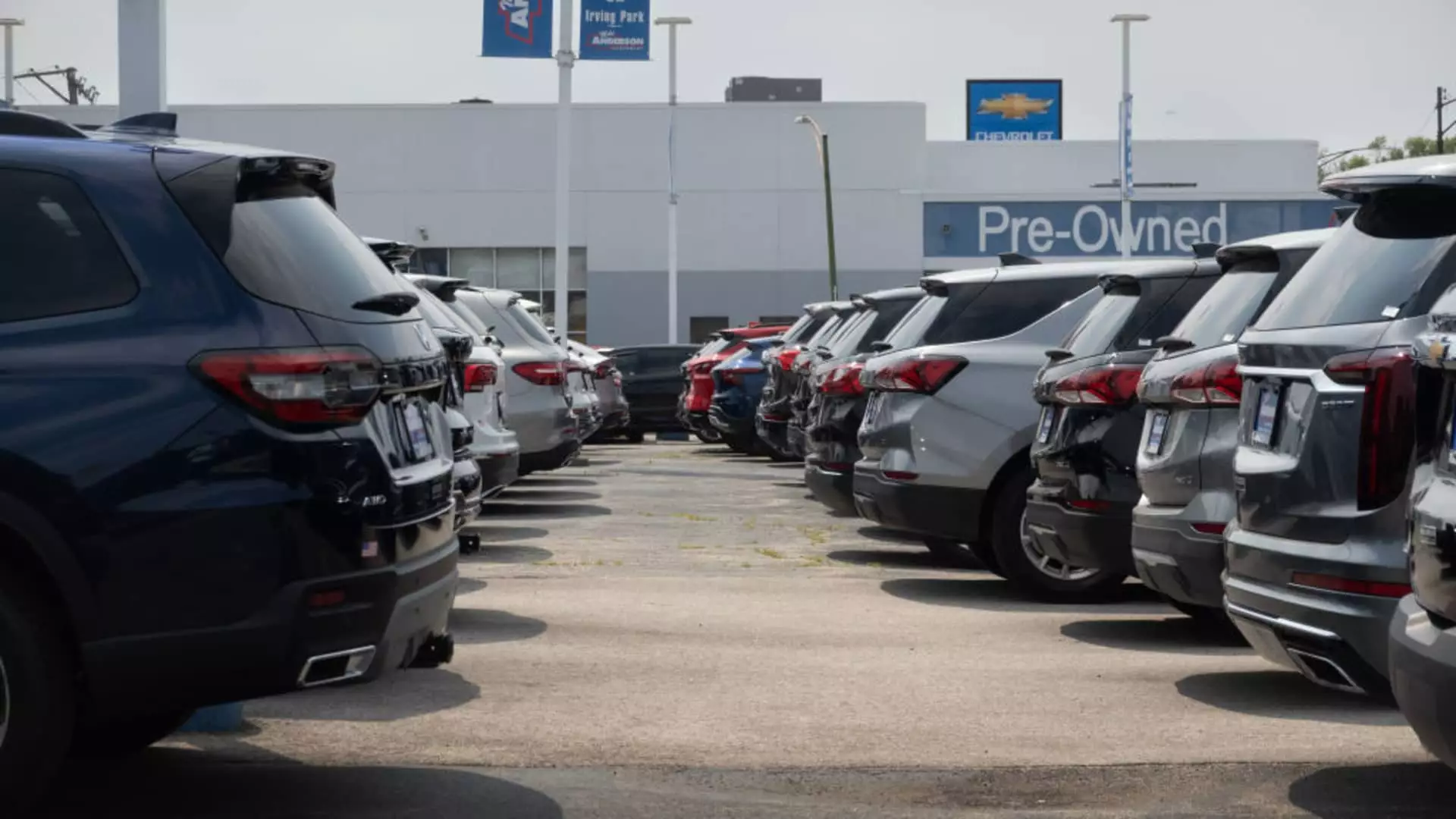The phenomenon of upside-down auto loans, where borrowers owe more on their vehicle loans than the cars are worth, is becoming increasingly prevalent among American consumers. According to a recent report from Edmunds.com, the average owed amount has reached a staggering $6,458 in the third quarter, rising from $6,255 in the previous quarter and significantly higher than $5,808 a year earlier. This alarming trend is indicative of broader financial pressures faced by consumers, as the cost of vehicle ownership continues to escalate at an unsettling pace.
The implications of being upside-down on auto loans extend beyond temporary financial inconveniences. The Federal Reserve recently highlighted that delinquency rates for auto loans have surged, surpassing pre-pandemic levels as 2023 draws to a close. This spike contrasts sharply with the historically low rates observed during the height of the pandemic, revealing a reversal of fortune that many consumers are experiencing. As Jessica Caldwell, head of insights at Edmunds, states, while minor negative equity isn’t catastrophic, a growing number of consumers facing tens of thousands in negative equity raises a red flag about their financial health and overall economic stability.
The statistics from Edmunds paint a stark picture of the state of auto financing. Over 20% of consumers with negative equity owe upwards of $10,000 on their loans, with around 7.5% surpassing the $15,000 mark. Such figures signal a worrying trend; when a sizeable portion of the population is struggling with significant loan amounts that exceed their vehicle’s worth, broader economic implications may follow. These individuals may find themselves not only unable to sell or trade in their cars but also at risk of larger financial stresses as they navigate their long-term fiscal responsibilities.
While the current financial landscape can be daunting, consumers can adopt strategies to mitigate the adverse effects of upside-down loans. One suggested approach involves holding onto vehicles for extended periods, thereby allowing time for depreciation to stabilize and equity to build. Regular maintenance is another essential strategy, as it can help prevent further declines in vehicle value. Ivan Drury, Edmunds’ director of insights, emphasizes the need for consumers to reconsider their ownership habits. Opting for shorter loan terms and lower-priced vehicles can create a pathway away from the pitfalls of negative equity.
The present situation concerning upside-down loans can be traced back to the heightened demand in the auto market during the pandemic years, particularly in 2021 and 2022. Many consumers bought new vehicles amid restricted inventories due to supply chain issues and parts shortages, often paying inflated prices. As the auto market begins to stabilize and inventory levels rise, the rapid depreciation of newer models has left many car owners in precarious financial positions.
The trend of upside-down auto loans is a multifaceted issue that underscores the financial pressure facing American consumers today. As household budgets tighten, it becomes imperative for consumers to remain vigilant and strategic about their vehicle financing choices. With a nuanced understanding of both the market landscape and personal financial management, individuals can navigate through uncertain waters and steer away from the challenges posed by negative equity.

